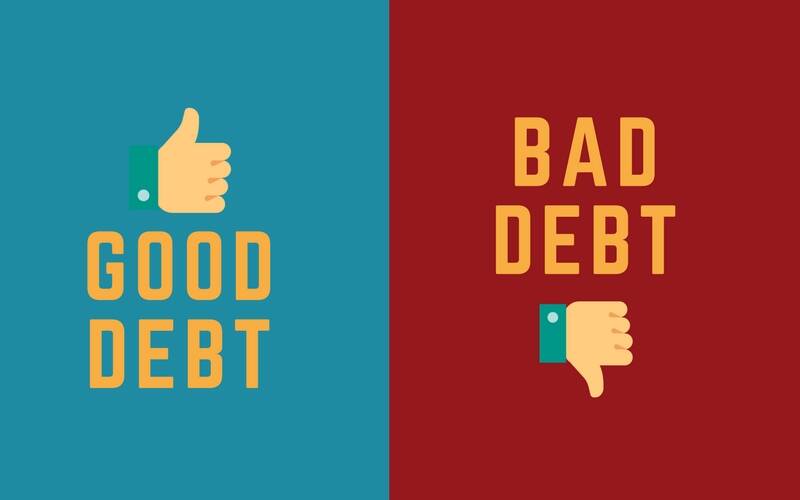It's good to have a clear idea about the crucial differences between good and bad debt.
Good Debt:
-
Investment in Your Future: Good debt is usually taken on for investments that have the potential to increase in value over time. For example, borrowing for a home to live in, higher education or starting a business can lead to long-term benefits and higher earning potential.
-
Low Interest Rates: Good debt often comes with lower interest rates, making it more affordable in the long run.
-
Positive Return on Investment: Good debt helps you build assets or acquire something of value that can appreciate over time. Think of a mortgage that allows you to own a home or a business loan that helps you expand your business.
Bad Debt:
-
High Interest Rates: Bad debt usually comes with higher interest rates that can quickly eat away at your finances. Credit cards and personal loans have higher interest rates.
-
Depreciating Assets: Bad debt often involves purchasing items that lose value over time. Financing luxury goods, holidays, or buying a new car can leave you with a depreciating asset and a pile of high priced debt.
-
Impulsive or Unnecessary Spending: Bad debt is often a result of impulsive buying or overspending on non-essential items. It's important to distinguish between needs and wants and avoid taking on debt for unnecessary purchases.
Remember, the key to managing debt effectively is to use it wisely and responsibly. Good debt can lead to financial growth and stability, while bad debt can trap you in a cycle of financial stress. Prioritise financial discipline, make informed borrowing decisions, and focus on paying down high-interest debt as a first priority.
Reach out if you have ay questions here or below.



Add comment
Comments